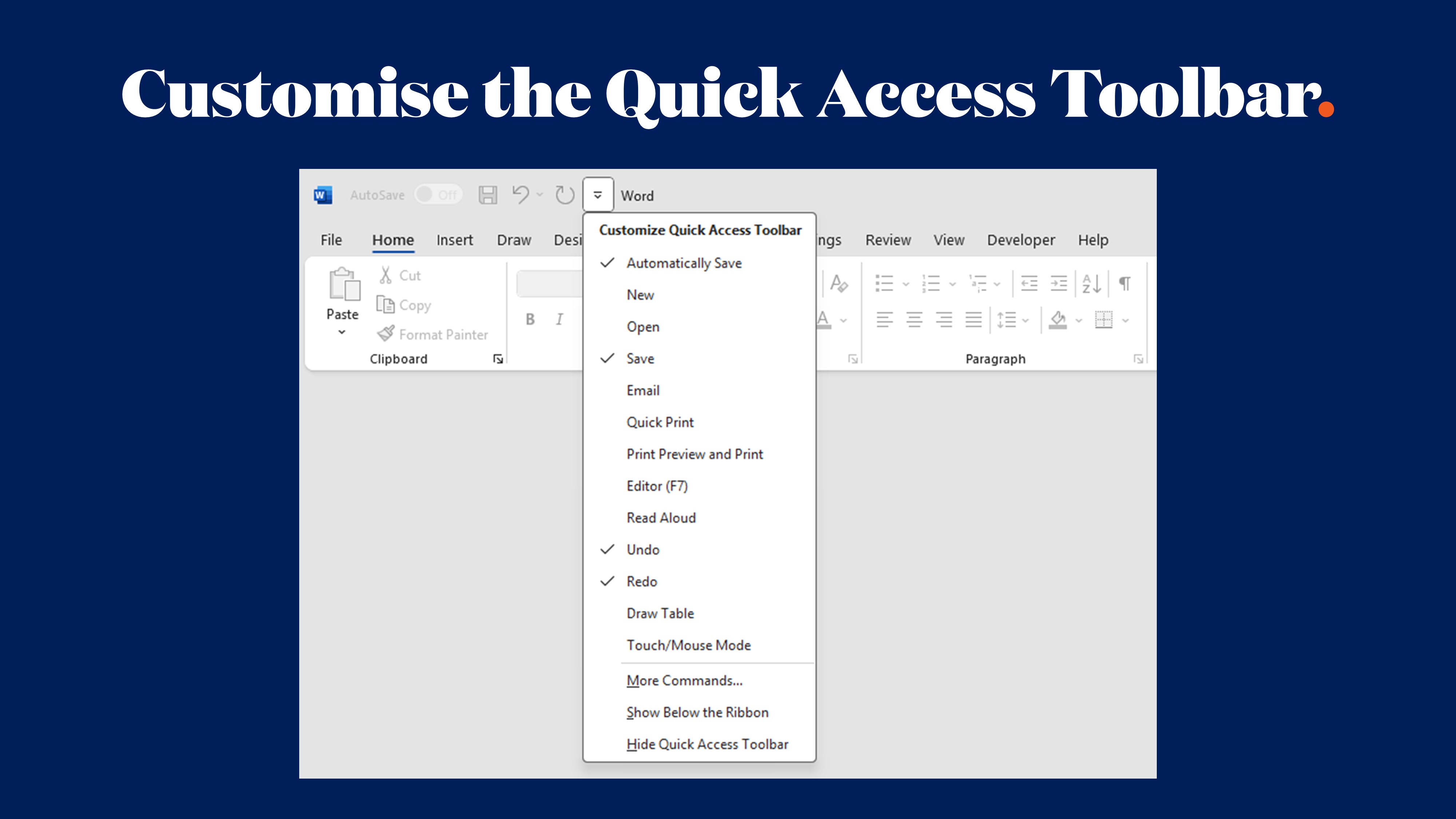The Accessibility Audit: Is Your Template Library Legally Compliant for 2025?

There's a storm brewing in the world of business communications, and it's got nothing to do with the latest design trends or flashy animations. With accessibility lawsuits surging globally accessibility compliance has moved from "nice to have" to "absolutely essential" for Australian businesses.
If you're a marketing manager, communications director, or brand manager reading this whilst enjoying your flat white, you might be wondering: "Are my PowerPoint templates legally sound? Could my Word documents land us in hot water?" For many Australian businesses, especially those trading internationally, the answer is: quite possibly, yes.
But before you panic and start frantically checking every template in your arsenal, let's break down what this actually means for your business and how you can turn compliance into a competitive advantage.
The Australian Context: Why This Matters Down Under
Australia's Disability Discrimination Act 1992 requires all businesses serving the public to provide equal access to their goods and services - and yes, that includes your digital documents and presentations. With one in five Australians living with some form of disability, we're talking about over 2 million Australians of working age who might be excluded by poorly designed templates.
Here's what makes this particularly relevant for Australian marketing and communications teams: the Australian Human Rights Commission specifically recommends that businesses follow WCAG 2.0 Level AA guidelines for digital accessibility. This isn't just for websites - it applies to any digital content you create, including those PowerPoint presentations you're sending to clients and the Word proposals that land in stakeholders' inboxes.
The commission receives complaints about digital accessibility discrimination regularly, with cases like the Coles supermarket lawsuit demonstrating that Australian courts take these issues seriously. In that landmark case, a visually impaired woman successfully argued that the retailer's inaccessible online shopping service constituted discrimination under the DDA.
For Australian businesses trading internationally, the compliance picture becomes even more complex. The European Accessibility Act now requires any business trading in EU markets to meet accessibility standards, whilst American customers are protected by increasingly enforced ADA compliance requirements. This triple-layer of regulation affects many Australian companies, from tech startups selling software globally to consultancies pitching to international clients.
Your Template Library: The Hidden Compliance Risk
Most Australian marketing teams have dozens, if not hundreds, of templates across Word, PowerPoint, and Excel. You've got pitch decks for potential investors, proposal templates for new business, financial reports for stakeholders, training materials for staff, and countless other documents that form the backbone of your corporate communications.
But here's the uncomfortable truth: research shows that 95.9% of websites fail basic accessibility standards, and the same compliance issues plague business documents. Nearly 5 million Australians don't have access to certain products and services because of poor design - and your templates might be part of that problem.
Think about your typical PowerPoint template. Does it use sufficient colour contrast? The Australian Human Rights Commission guidelines specify that text should be readable in high contrast mode. Your trendy light grey text on white backgrounds? They're likely failing accessibility standards. Are your headings properly structured for screen readers? Do your images have meaningful alternative text that actually describes their purpose?
What about your Word templates? Microsoft's own guidance emphasises that you should use built-in heading styles in logical order (Heading 1, then Heading 2, then Heading 3) rather than just making text larger or bold. This might seem like a minor detail, but for someone using a screen reader, it's the difference between being able to navigate your document efficiently and being completely lost.
Your Excel templates present their own challenges. Tables need concise, descriptive headings and should avoid blank cells, merged cells, and nested tables - features that many of us use regularly without thinking about their accessibility implications.
The Business Case: Beyond Legal Compliance
Before you start seeing accessibility as another compliance burden, consider this: accessible design doesn't just serve people with disabilities; it improves usability for everyone. Captions help people watching videos in open offices. High contrast text is easier to read on mobile devices in bright Aussie sunlight. Clear heading structures make documents easier to scan for time-poor executives.
From a purely business perspective, accessible templates improve your team's efficiency. Microsoft Office's built-in Accessibility Checker runs automatically in the background, flagging issues as you work. When your templates are designed with accessibility in mind from the start, you eliminate the need for time-consuming remediation later.
There's also a significant reputational benefit. Australian consumers increasingly expect brands to demonstrate genuine commitment to social responsibility. When you can confidently state that your materials are fully accessible, you're not just covering legal bases - you're showing that your brand genuinely values inclusion.
For Australian businesses competing internationally, accessibility compliance can actually become a competitive differentiator. When pitching against competitors who haven't considered accessibility, your compliance-ready materials demonstrate professionalism and attention to detail that clients notice.
The Template Audit: What You Need to Check
So how do you audit your existing template library for compliance? Start with the big three areas that cause the most problems:
Colour and Contrast: WCAG 2.0 recommends a minimum ratio of 4.5:1 for normal text and 7:1 for large text. Those sophisticated muted tones that look great in your brand guidelines? They need to be tested for compliance across all applications. Microsoft's built-in contrast checking tools can help identify problem areas.
Structure and Navigation: Proper heading hierarchy, meaningful hyperlinks, and logical reading order are essential. If your templates rely on manual formatting rather than built-in styles, they're probably creating barriers for assistive technology users. Screen readers navigate documents by jumping between headings - if your structure is inconsistent, users get lost.
Visual Content: Every image, chart, or graphic in your templates needs meaningful alternative text. This isn't about describing what you see - it's about conveying the purpose and context. A chart showing quarterly growth shouldn't just have alt text saying "chart" - it should explain what the data reveals.
Microsoft's Accessibility Checker is available across Word, Excel, PowerPoint, Outlook, and OneNote, but here's the crucial point: automated tools can only detect about 30% of accessibility issues. The rest require expert review and testing with actual assistive technologies.
The International Angle: Triple Compliance Challenges
For Australian businesses working internationally, accessibility compliance becomes a complex juggling act.
You need to consider Australian DDA requirements for your local market, European Accessibility Act compliance for any EU trading (with fines up to €250,000), and ADA compliance for US customers (with penalties of $75,000-$150,000).
The good news? WCAG 2.1 Level AA compliance generally satisfies all three regulatory frameworks. The challenge is ensuring your templates actually meet these standards consistently, not just on paper.
Future-Proofing Your Brand: The Strategic Advantage
Smart Australian marketing teams are already seeing accessibility as a strategic advantage. When you can confidently state that your materials are fully accessible, you're demonstrating the kind of inclusive thinking that resonates with modern consumers and B2B decision-makers alike.
There's also a practical workflow benefit. When your templates are built with accessibility features embedded from the start, you're future-proofing your content creation process. New regulations will continue to emerge, standards will evolve, but if your foundation is solid, adapting becomes much simpler.
Consider this: every time your team creates a new presentation or proposal, they're potentially creating a compliance risk. Wouldn't you rather have templates that automatically guide them toward accessible design choices?
Moving Forward: From Risk to Opportunity
This transition doesn't have to be overwhelming for Australian businesses. Start with your most frequently used templates - your core pitch deck, your standard proposal format, your primary report template. Address the obvious issues first: fix contrast problems, add proper heading structures, and ensure all images have meaningful alt text.
Consider this an opportunity to refresh your entire template library. Those outdated designs you've been meaning to update? Now you've got the perfect business case for a comprehensive overhaul that not only looks fantastic but genuinely serves all your stakeholders - and keeps you on the right side of the law.
The deadline reality is here: accessibility compliance is no longer optional for any Australian business that wants to operate confidently in today's market, whether locally or internationally.
Are You Ready to Future-Proof Your Templates?
Accessibility compliance might seem daunting, but it's far more manageable when you've got expert guidance. At Ideaseed, we specialise in creating Microsoft Office templates that aren't just visually stunning - they're built for compliance from the ground up, meeting Australian DDA requirements and international standards.
Whether you need a complete template library overhaul or want to ensure your existing materials meet accessibility standards, we're here to help you navigate this transition smoothly. We understand the intersection of great design, brand consistency, and legal compliance because we've been mastering Microsoft Office solutions for Australian businesses for years.
Take our free template audit for Word and PowerPoint to discover where your current templates stand and how we can help you build a truly inclusive, legally compliant, and brilliantly designed template library.
who we work with





.svg)
.svg)
.svg)
.svg)







%20(2).avif)



.svg)



















.svg)




















.svg)
.svg)
.svg)
.svg)







%20(2).avif)
The ideaseed difference
We’re fast. Really fast
We know time is of the essence, so we pride ourselves on quick, efficient delivery without sacrificing quality. Whether you have a tight deadline or need a last-minute update, our team is committed to delivering polished results within even the tightest timeframe.
We’re reliable. Always
Our clients trust us because we consistently deliver beautiful, high-quality work. We understand the importance of dependable tools in your business, and we never compromise on quality or functionality.
We go the extra mile
We don’t just meet expectations; we exceed them. We take the time to understand your needs and find creative, tailored solutions that make your work easier and more effective. Our commitment to going above and beyond means you get more than just a template — you get a partner who genuinely cares about your success.

